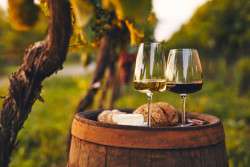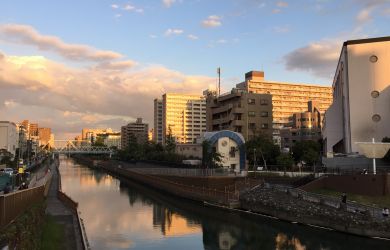
Originally published on metropolis.co.jp on June 2012

Usually when I visit art galleries and museums, rain and hailstones don’t start pouring down on the exhibits right in the middle of the exhibition. But the Omiya Bonsai Art Museum (OBAM) is not your average white-cube museum, and the exhibits are much more weather-resistant than the usual kind of exhibits. Just as well, because most of them are kept outdoors in the museum’s courtyard.
But is it art, you might ask? Well, if Tracey Emin’s unmade bed qualifies, then there should be no problem accepting something as beautiful and refined as bonsai, with its rich aesthetic traditions and poetic connotations.
OBAM underlines its claim to artistic status by showing some hanging scroll paintings in the traditional Japanese setting of tatami room wall alcoves. Plus, there is also a gallery where ukiyo-e woodblock prints and paintings are exhibited. The only rule here is that the artworks must show bonsai somewhere in the picture.
But why is Omiya the centre of the bonsai universe? It all goes back to the Great Kanto Earthquake of 1923 when professional bonsai growers escaped from Tokyo’s devastation to the area now called Bonsai-cho in Saitama City. This museum, opened in 2010, is part of a self-conscious attempt by Saitama City to celebrate this local tradition and to promote tourism. For this reason the museum welcomes foreign visitors with clear English explanations.
This is necessary as some Westerners tend to see bonsai as a peculiar form of Oriental cruelty—on a par with foot-binding or whale harpooning. Extreme pruning and shaping of trees with wire could be viewed as a form of “plant abuse,” but such obsessions are misplaced in this case.
While smaller bonsai are often grown from seedlings, the more famous examples of the art are found in nature. Cultivators search out the most damaged and withered specimens they can find. These are usually trees that have put down roots in poor locations, like rocky and exposed hillsides, or suffered a stroke of ill luck, such as being struck by lightning or damaged by a rock fall.
Rather than from man, this cruelty comes from nature. The point is that those trees have battled against nature and shown spirit and character. Such trees—often the resilient pine or juniper—have a unique beauty. They are, in effect, living sculptures that embody the struggle to overcome adversity and even death.
But these small, stunted trees, often centuries old, are merely the raw material of the artist’s craft. Once selected, the tree gets the care it never received in nature, and is modified and altered to fit in with the formal aesthetic of bonsai.
This aesthetic has some common points with other Japanese art forms, like ikebana, Noh and Nihonga painting, which all seek balance and harmony without repetition. However, the key is knowing how to develop each tree to best reveal its inner character, while helping it harmonize with a more general standard of beauty.
It is this marriage between highly developed art and an unsentimentalized concept of nature that makes bonsai so fascinating, and distinct from treatments of nature in the West. The sudden hailstorm when I visited the museum only added to this effect.
Omiya Bonsai Art Museum (listing).







